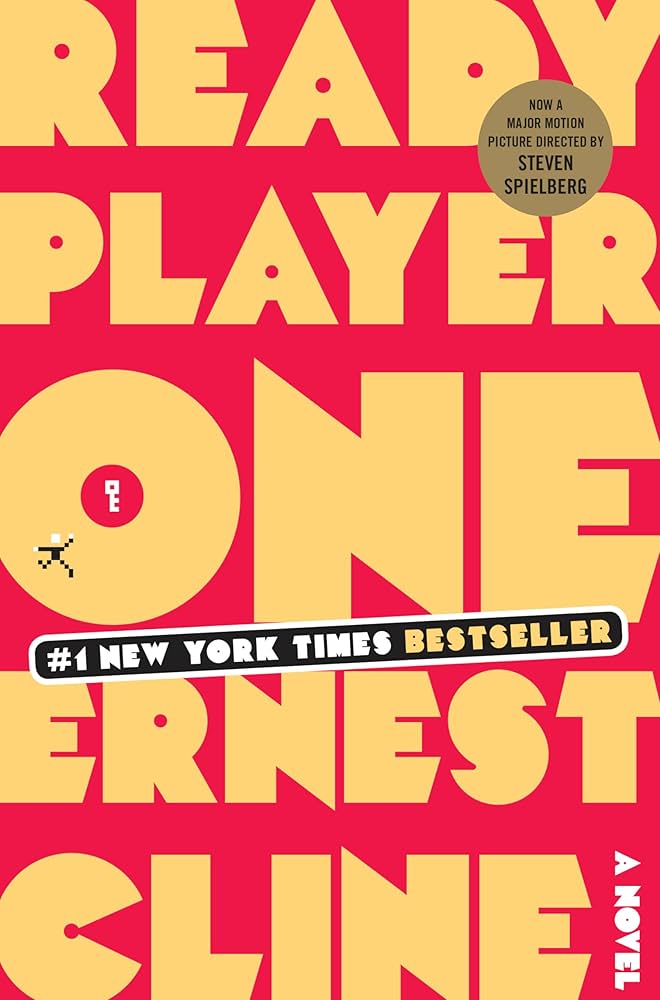There is something magical about a book that lets you time-travel without the help of a flux capacitor. Ready Player One does not simply tip its hat to the 80s and 90s; it puts on a neon windbreaker, slides into a pixelated arcade cabinet, and dares you to keep up. By the time you are halfway through the first chapter, you know you are in for a ride that is equal parts cultural scavenger hunt and futuristic survival story.
At its core, Ernest Cline’s novel is more than nostalgia tourism. The OASIS, his sprawling virtual universe, is not just a clever backdrop. It is a living, breathing ecosystem that feels strangely tangible. Every joystick, mixtape, and pop-culture reference works as scaffolding for a future that is at once exhilarating and terrifying. What fascinated me most was how believable it all was. Cline does not treat the 80s and 90s as museum pieces, dusted off for the reader’s amusement. Instead, he weaponizes them, turning cultural artifacts into building blocks for a new social order. The result is a world that could almost be tomorrow, constructed from yesterday’s obsessions.
The story follows Wade Watts, a down-on-his-luck teenager whose life outside the OASIS is defined by poverty, isolation, and corporate overreach. Inside the OASIS, however, he becomes a player in the hunt for James Halliday’s Easter egg, a digital prize that promises fortune and control of the virtual realm itself. Wade may appear to be a typical “chosen one” protagonist, but his journey is anything but bland. The stakes are immense, corporations versus dreamers, yet grounded in tactile detail: Atari cartridges, Monty Python quotes, DeLorean dashboards. These fragments of cultural DNA remind us that the future is rarely built from scratch. It drags the past with it, pixel by pixel, reshaping old dreams into new realities.
As someone who writes speculative fiction, I was struck by how effectively Cline stitches nostalgia into futurism. His OASIS is not merely escapist fluff. It reflects a truth about human nature: when the present becomes unbearable, we turn to the familiar comforts of the past, even as we build new worlds upon them. In my own work, I often try to create this same uncanny fusion, the sense that we are stepping into a place both familiar and foreign. Reading Ready Player One felt like watching that process executed on the grandest scale possible.
The novel, of course, is not without quirks. The avalanche of references can sometimes feel like homework for readers who did not grow up memorizing WarGames dialogue or the lyrics to Rush’s 2112. At times, the nostalgia threatens to drown the narrative rather than enhance it. Yet even when it verges on excess, the sheer enthusiasm of the storytelling carries you along. It is like listening to an over-enthusiastic friend gush about their favorite childhood cartoons: you may not catch every reference, but you cannot help being swept up in their excitement.
What lingers after the final page is not the laundry list of cultural callbacks, but the spirit of optimism. For all its dystopian grit, Ready Player One is a hopeful book. The OASIS, despite its flaws, is proof of humanity’s boundless capacity to dream. It shows us a society that has collapsed in reality but still dares to imagine better worlds, even if those worlds are built from Pac-Man mazes, Dungeons & Dragons rulebooks, and John Hughes movie marathons. That, perhaps, is Cline’s most subversive point: the things we once dismissed as frivolous entertainment can become the very architecture of survival.
Verdict: Ready Player One is a wild, nostalgic ride that captures the spirit of an era while envisioning a future shaped by its cultural residue. It reminds us that the future never arrives pristine and untouched. It is always stitched together from fragments of what came before. And if we are lucky, every once in a while, you can still save the world with a cheat code or two.

